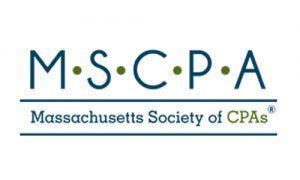Tax reminders
- December 15 – Due date for calendar-year corporations to pay the last installment of 2016 estimated income tax.
- December 31 – Deadline to complete 2016 tax-free gifts of up to $14,000 per recipient.
- December 31 – Deadline for paying expenses you want to be able to deduct on your 2016 income tax return.
Be prepared for a higher social security wage base in 2017
For 2017, the wage base for withholding social security tax from wages has increased to $127,200, up from $118,500 in 2016. The “wage base” is the amount of wages on which employers and employees must pay the 6.2% social security tax. The increased wage base means an additional $8,700 of your income is taxed.
The wage base does not affect the 1.45% Medicare payroll tax. Medicare tax is assessed on all wages and net income from self-employment, including amounts above the base. The 0.9% Additional Medicare Tax is not affected either. That tax applies to your compensation in excess of $250,000 when you’re married filing jointly ($200,000 when you’re single).
The federal payroll tax rate for employers and employees remains 7.65%, with social security tax withheld and paid at 6.2%, and Medicare tax withheld and paid at 1.45%.
Check your basis in your S corporation before the end of the year
Losses can be hard to take – so if you think your S corporation will show a loss for 2016, now’s the time to plan to make sure you’ll get the full tax benefit.
The problem. The amount of the business loss you can deduct on your individual income tax return is limited to your basis in your S corporation stock and certain corporate debt. This is true even if the loss reported to you on Schedule K-1 is greater than your basis.
Here’s how basis works. Typically, stock basis in an S corporation begins with the capital contribution you make to get the company started. Note that when you receive stock as a gift, an inheritance, or in place of compensation, your initial basis is calculated differently.
At the end of each taxable year, your stock basis is adjusted to reflect your business’s operating results. Taxable income increases your basis, while losses reduce it. Basis is also increased by capital you put into your company and reduced by amounts you withdraw, such as distributions.
After your stock basis reaches zero, you may be able to deduct additional losses, up to the extent of your debt basis. That’s the basis you have in loans you make to your company. However, once your stock and debt basis are both reduced to zero, losses incurred are suspended, which means you get no current tax benefit. You can generally take suspended losses in future years, when you again have basis.
The solution. You can increase your basis – and your ability to take losses – by adding capital or making loans to your business.
Please call to discuss how basis affects your individual income tax return. We can guide you through the rules.
No change to nanny tax threshold
The social security coverage threshold for domestic employees, including nannies, will remain at $2,000 for 2017, the same as the 2016 threshold. If your household workers earn less than $2,000, you do not have to pay social security or Medicare taxes on wages paid to those employees. When you pay your household employees more than the threshold, you’re required to pay social security tax of 6.2% and Medicare tax of 1.45%. The $2,000 threshold applies separately to each employee.
Are you up-to-date on the tax rules affecting your 2016 return?
Here’s a quick review of some of the rules you can expect to encounter when you get ready to prepare your 2016 federal income tax return.
Income tax rates. For 2016, ordinary federal income tax rates range from 10% to 35% unless your taxable income exceeds $415,050 when you’re single or $466,950 if you’re married filing jointly. The rate on income above those amounts is 39.6%.
Tax breaks that are now permanent. Three tax breaks you’ll be able to take on your 2016 return, and on future returns: 1) The optional deduction for state and local sales tax in lieu of state and local income tax; 2) the $250 deduction for classroom supplies if you’re an educator; and 3) IRA-to-charity transfers of up to $100,000 when you’re 70½ or older.
Itemized deductions and personal exemption phase-outs. For 2016, itemized deductions and personal exemptions are limited when you file as single and your adjusted gross income (AGI) is above $259,400. The limitation begins with AGI above $311,300 for married couples filing jointly.
Alternative minimum tax. The exemption amount for 2016 is $53,900 for singles and $83,800 for married filing jointly.
Capital gains and dividends. Long-term gains are generally taxed at 15%. The rate is zero percent if you’re in the 10% and 15% ordinary income brackets, and 20% when you’re in the 39.6% ordinary income bracket.
Affordable Care Act surtaxes. You’ll pay a Medicare surtax of 0.9% on wages and self-employment income exceeding $200,000 when you’re single and $250,000 when you’re married filing jointly. For unearned income, you’ll pay the 3.8% net investment income tax when you’re single and your modified AGI exceeds $200,000. If you’re married filing jointly, the net investment income tax is imposed when your modified AGI exceeds $250,000.
If you have questions about your 2016 tax return, do not hesitate to call me.
Thank you and best wishes for a joyful, prosperous 2017!






